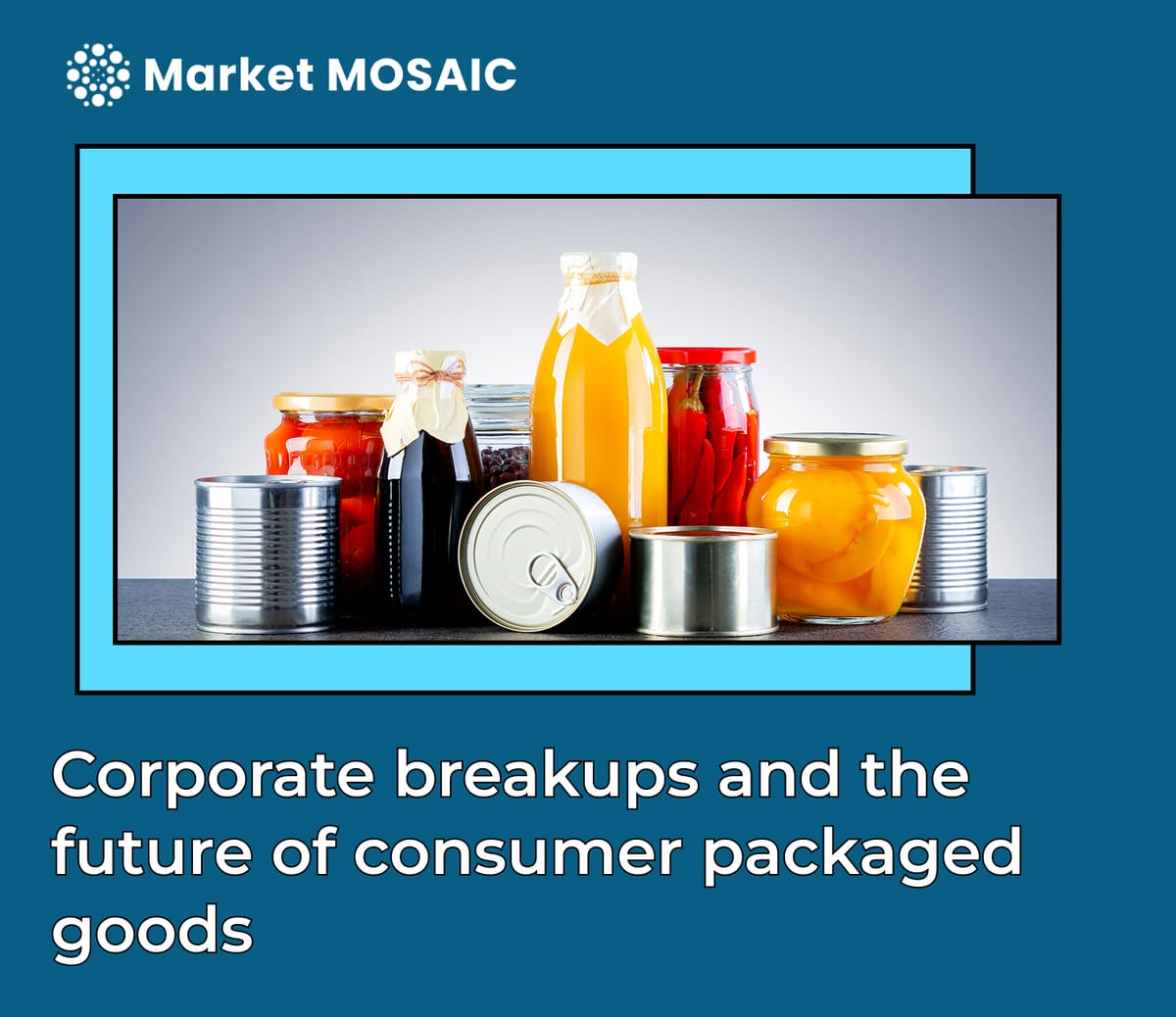Corporate breakups and the future of consumer packaged goods
Kraft Heinz, Keurig Dr Pepper, and Unilever are reshaping strategy by breaking up sprawling portfolios. The goal is sharper focus, faster adaptation, and stronger consumer trust. Agility, digital engagement, and sustainability are emerging as the real drivers of growth in consumer goods

A market too big to ignore
Consumer packaged goods (CPG) is a trillion-dollar industry, touching nearly every household worldwide. From food staples to personal care, these companies sit at the center of global consumer demand. For decades, their strength came from scale; bigger portfolios, wider reach, and the promise of stability.
Shifting tides in consumer behavior
That stability is now under pressure. Consumers are gravitating toward brands that feel authentic, specialized, and closer to their needs. Large, diversified portfolios often appear too distant, too generic, or too slow to innovate. At the same time, inflation, shifting supply chains, and digital-first competition are squeezing margins. Giants like Kraft Heinz, Keurig Dr Pepper, and Unilever can no longer rely on diversification alone to guarantee growth.
Why breakups are becoming strategy
Breaking up allows these companies to act smaller while still being big. Kraft Heinz’s split into a high-growth sauces business and a slower-growth grocery staples arm lets each side chase its own market reality. Keurig Dr Pepper’s separation of North American beverages and global coffee operations acknowledges that consumer segments don’t move in sync.
By streamlining, CPG's able to focus, innovate, and respond with the agility consumers expect, without giving up the resources of a large corporation.
Strategy beyond breakups
CPG's breakup may grab headlines, but they are only one path forward in building brand sustainability. Many CPG companies are also reshaping growth through other channels. Some are streamlining portfolios, shedding underperforming brands to sharpen positioning and concentrate resources where they matter most. Others are pursuing acquisitions, buying smaller niche players that already command consumer trust and deliver the authenticity big portfolios often lack.
Digital channels are becoming equally critical. Personalization, direct-to-consumer platforms, and AI-driven insights are no longer experimental, they are now central to how companies stay in sync with shifting preferences.
Alongside this, sustainability has moved from the margins to the core of strategy. Consumers now want to see concrete actions; like recyclable packaging, reduced carbon footprints, and transparent sourcing. Regulators are also tightening standards, pushing companies to report progress and meet measurable targets. Businesses that fail to build sustainability into everyday operations, from supply chain to product design, risk being left behind by both the market and policymakers.
Insights for business leaders
A key lesson for business leaders is that being big is no longer enough. A key lesson for business leaders is that being big is no longer enough; today, real advantage comes from how quickly a company can adapt to changing consumer expectations.
In the past, scale signified strength; more products, more markets, more stability. But today, scale without agility only creates rigidity. The true measure of scale is how quickly a company can adapt, shift resources, and respond to consumer expectations. Agility, not sheer size, is what defines competitiveness in the modern CPG market.
Breakups prove that even the largest corporations can reorganize to stay relevant. Yet structural change is just the first step. Leaders must constantly evaluate if their portfolios still earn consumer trust, ensure their operations move fast enough to keep pace with digital markets, and demonstrate that their sustainability efforts are strong and credible enough to build long-term loyalty.
The winners will not simply be smaller versions of yesterday’s conglomerates. They will be sharper in focus, more responsive to change, and intentional in the way they create value





